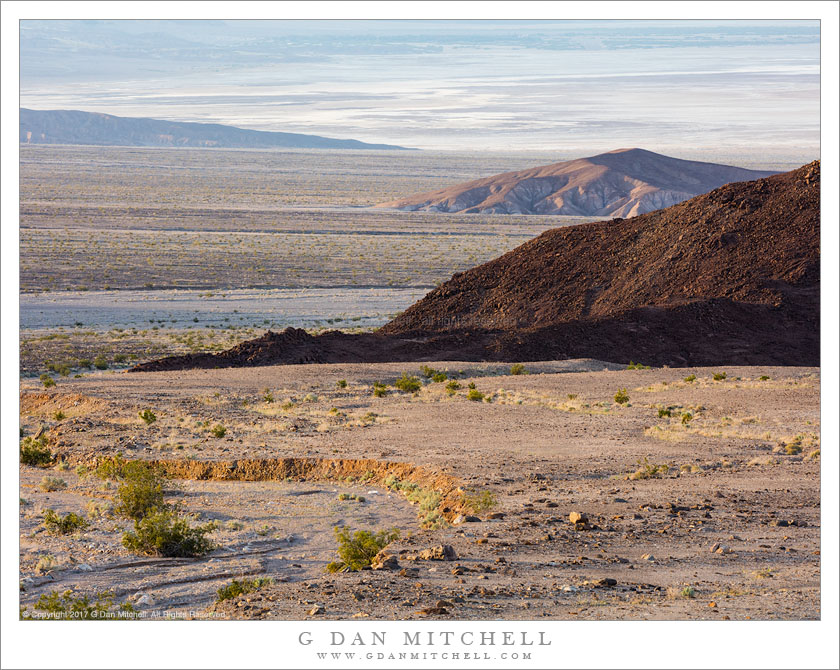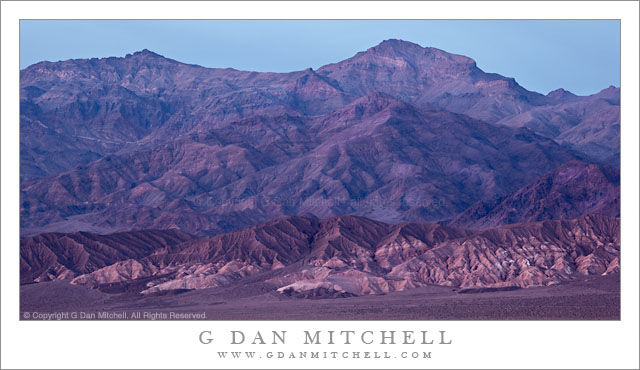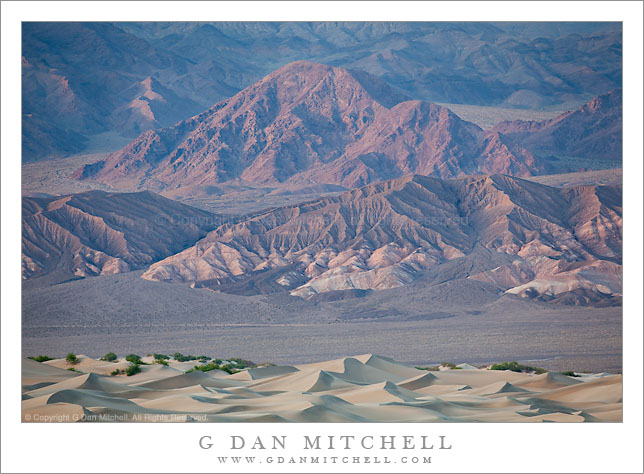
Hills And Alluvial Fan. Death Valley National Park, California. april 6, 2017. © Copyright 2017 G Dan Mitchell – all rights reserved.
Morning light on desert hills and a gigantic alluvial fan above the salt flats of Death Valley
There are a number of things that characterize Death Valley for me — the arid climate, of course, but also the exposed geology, the texture and sound of gravel underfoot, the widely scattered plant life, the quality of atmosphere and light. But most of all I think it is the immense scale of the place that impresses me. It is easy to overlook the fact that the small hill or those dunes or that peak that seem so close may be far enough away that you could not walk there in a day, or that it might take a few hours of driving.
That scale is visible in this photograph, though it may not be immediately apparent. While the foreground was, with its low walls illuminated by early morning light, is very close, and getting to the first dark hill might take no more than 15 minutes, the further hill down on the lower portion of the alluvial fan might require a morning’s walk. It would likely take all day to get to the closest portion of the distant salt flats, and the furthest areas at the upper part of the frame would require a few days of walking. I arrived at this place — but not by walking! — before the sun rose, when it was cloudy and seemed like it might not be a good day for light. But there were a few breaks in the clouds, and across the valley to the right of the scene some sun was striking a mountain ridge. Before long, as the sun came up and rose higher in the sky, that light began to move closer until it finally washed across the landscape in front of me.
 G Dan Mitchell is a California photographer and visual opportunist. His book, “California’s Fall Color: A Photographer’s Guide to Autumn in the Sierra” is available from Heyday Books and Amazon.
G Dan Mitchell is a California photographer and visual opportunist. His book, “California’s Fall Color: A Photographer’s Guide to Autumn in the Sierra” is available from Heyday Books and Amazon.
Blog | About | Flickr | Twitter | Facebook | Google+ | LinkedIn | Email
All media © Copyright G Dan Mitchell and others as indicated. Any use requires advance permission from G Dan Mitchell.



